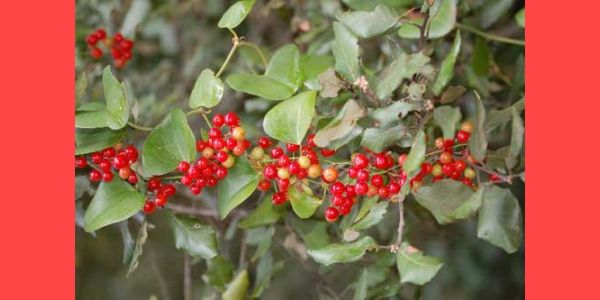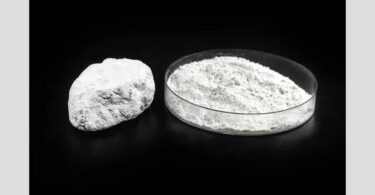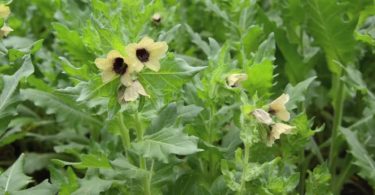Sarsaparilla is a well known homeopathy remedy which is used with great success in many complaints related to urinary system, especially in renal stones, often given therapeutically.
But when we see our literature of drug proving, it also has wonderful symptoms related to skin complaints.
Sarsaparilla is a tropical plant from the genus Smilax. For centuries, indigenous people around the world used the root of the sarsaparilla plant for treating joint problems like arthritis, and for healing skin problems like psoriasis, eczema, and dermatitis.
Clinical research has validated the traditional use of sarsaparilla for skin conditions such as psoriasis, eczema, acne, and leprosy. In 1942, it was reported in the New England Journal of Medicine to improve the condition of psoriasis dramatically. There the results of a clinical study with 92 patients was detailed which reported that it improved psoriasis lesions in 62% of cases and completely cleared lesions in 18% of cases.
SARSAPARILLA OFFICINALIS
Sarsaparilla patients looks prematurely old, dull with Emaciated, shriveled wrinkled patchy skin. This appearance of skin is very characteristic can be found in many skin complaints.
Boils, herpetic eruption, warts, rhagades (cracks), pustules, acne and many other kind of skin complaints are seen in sarsaparilla patients.
Eruptions are humid, moist, dry, crusty, itchy and burning. Vesicular discharge from the eruption, which increases burning in eruptions. Burning increase with rubbing.
Eruption all over the body, usually one sided and especially right side. Right side of nose, right wrist, right ankle etc.
Itching when going in cold air from warm room. Scratching results in eruption, inflammation and burning which ends in thick scab and causing tearing burning pain in open air.
Rhagades (fissures, cracks)on finger and toes. Rhagades, deep, burning.
According to Dr W.H.Burt “Sarsaprilla is also very useful in boils, and eczema. Its action upon the skin is of so valuable a character, I would urge physicians to test it. In many skin diseases, and old ulcers its action is quick and well marked.”
Ailments from vaccination, suppression with sulphur or mercury, summer heat, cold air etc.
Head– moist eruption on scalp. Plica polonica. Scalp very sensitive to touch. Falling of hair due to scalp affections. Hair stick together. Eruption predominantly on right side. Serpigious (having a wavy margin) ulcer of scalp. Eczema, scabs, crusty eruption.
Face – Acne, pustules, papules, boils, eczema on face, especially on right side of nose and on upper lip. Painful eruptions on forehead before and during menses. Burning pain in eruption. Wrinkled face, skin unhealthy looks prematurely old.
Mouth – Apthae on tongue and palate. Vesicles on tongue. Dryness of moth with or without thirst.
Chest– Cracks on nipples. Nipple withered, retracted. Eruption with itching on nipple.
Male genitalia– Eruption on penis and scrotum. Moist crusts, eczema, herpetic eruption. Ulcers on penis. Violent itching on penis extending to scrotum. Very offensive perspiration in genitals.
Extremities– Onychia, ulceration around finger tips. Cutting pains in fingers especially under nails. Cracked skin in fingers, toes and heels. Excoriation of skin between toes. Warts on finger tip and joints of fingers.
Differentiation with other skin remedies.
When we repertories +2, +3 and +4 rubrics of skin of sarsaparilla we find there are lots of medicines which have similar symptoms and with same intensity. How will we differentiate among these medicines ?
Sulphur –
Remedy used in majority of skin complaints but when we differentiate it with sarsaparilla, it has dirty discolouration, filthy appearance of skin and sarsaparilla has dry, wrinkled shrivelled skin.
Sarsaparilla skin aggravates in summer and spring and sulphur has usually winter aggravation.
Sarsaparilla does not covers boils, bleeding eruptions chiefly but sulphur has this kind of eruptions.
Sulphur has night aggravation, sarsaparilla has morning and day aggravation.
Arsenic album –
Arsenic and sarsaparilla both have burning pains but Arsenic burning is relived by heat. Arsenic has red coppery and dark discolouration of skin with skin complaints, whereas sarsaparilla has characteristic emaciated, shrivelled wrinkled patchy skin. Arsenic discharges are usually offensive and acrid. In Sarsaparilla skin complaints are usually of right sided and arsenic is considered left side remedy. Arsenic has winter aggravation and better by heat (except head) and sarsaparilla has summer or heat aggravation.
Arsenic patients are very restless both physically and mentally with prostration, too much worried about their disease. Dissatisfied, need assurance from doctor etc.
Sepia –
Also known as washer women’s remedy. Sepia and sarsaparilla both have number of similar skin complaints but modalities can help differentiate between these two.
Sepia has winter and spring aggravation in general and sarsaparilla has summer and spring aggravation.
Sarsaparilla has skin ailments after vaccination but sepia does not cover this strongly. Sepia skin complaints usually aggravate after washing.
Sepia is one of the best remedy of herpetic eruptions, eruption in isolated patches and in sarsaparilla eruption are serpiginous form.
Mentally sepia has ailments from care, love, worries or grief but in sarsaparilla complaints are either due to financial loss or due to excessive masturbation.
Silicea.-
Suppuration is more marked in Silicea than sarsaparilla. Sarsaprilla has tendency to cracks and fissures and ulcers, rather than suppuration.
Silicea has carbuncle, blood boils, and the eruption with pus. Keloids are very painful sore.
In general Silicea patients are more chilly and aggravate by cold air exposure, in Sarasaprilla there is summer and spring aggravation.
Calcarea carb –
Calcarea carb has tendency to form tubercles i.e., cystic eruptions filled with white pale discharges. Sarsaparilla and Calcarea carb both have eruption after scratching, but sarsaparilla has summer or spring aggravation and calcarea has winter aggravation.
Calcarea carb has flabbiness in skin and sarsaparilla has wrinkled, shrivelled skin.
Skin dryness and roughness is more pronounced in Calcarea carb than in sarsaparilla.
Calcarea carb has coldness in general, cold perspiration, aggravation from cold weather, cold air etc.
Lycopodium –
Lycopodium and Sarsaparilla are very similar in their action both are extensively used in renal stones. Similarly, in skin both have old premature wrinkled skin. But Lycopodium has clammy skin with pale yellow discolouration. Lycopodium has marked burning associated with many skin complaints, Sarsaparilla does not have burning of the same intensity.
Lycopodium and Sarsaparilla both are wonderful medicine for warts Lycopodium has pedunculated jagged warts which may be bleeding, burning and Sarsaparilla has old, small and withered warts.
Both have skin cracks but sarsaparilla has deep and bloody cracks and cracks in new skin. Lycopodium has cracks specially on soles.
Both have marked dryness of skin but in Lycopodium dryness is usually associated with burning and inability to perspire.
Lycopodium has wonderful action on skin boils and carbuncle, impetigo and Sarsaprillla has crusty eruption chiefly.
Merc sol –
Merc sol and Sarsaparilla both have skin cracks which are deep and bloody but Merc has fetid discharge.
Sarsaparilla and Merc sol both have serpiginous eruptions but Merc sol has very sensitive margins.
Although Merc sol is in itself a wonderful remedy for ulcers but Sarsaparilla has also cured ulcer successfully when they are of mercurial origin. Both have deep ulcers but Merc sol ulcers are dirty in appearance.
Nitric Acid –
Nitric acid also has tendency to cracks which are deep and bloody but Nitric acid patients usually aggravates in change of weather and Sarsaparilla in summer and spring.
Nitric acid has boils, carbuncles which are large, periodical and with stinging pain but Sarsaparilla has serpiginous eruptions.
Nitric acid and Sarsaprilla both have warts but Nitric acid has bleeding, painful, pedunculated, itchy, moist and large warts. On the other hand Sarsaprilla warts are small, dry, withered and old in character.
Appearance of skin is characteristic in sarsaparilla, withered shrivelled skin which is not found in Nitric acid.
Rhus tox-
In Rhus tox skin eruptions often alternate with dysentery, respiratory complaints or any other internal complaints. It has special affinity for herpetic and vesicular eruptions.
Rhus tox and Sarsaparilla both have spring aggravation but like Sepia, Rhus tox has winter or cold aggravation and Sarsaparilla has summer aggravation.
Rhus tox skin usually does not aggravate before menses but Sarsaparilla skin has aggravation before menses.
Heper sulph :
It is a suppurating remedy, having pus, pain and hypersensitiveness in complaints. Splinter like pains in eruptions.
Heper sulph and sarsaparilla both have serpiginous eruption but Hepar sulph skin in very sensitive to touch.
Both have pustular eruption but sarsaparilla has itching in eruption are Heper sulph eruption are painful to touch.
Hepar sulph patients are very chilly.
Lachesis-
It has marked bluish, blackish discolouration in skin. Ulcers are malignant in character with bluish margins. Patechiae.
Lachesis has vesicular eruption filled with blood, bluish and burning.
Lachesis is wonderful remedy for urticaria aggravated by scratching which is not seen in sarsaparilla.
Both medicine have spring aggravation but sarsaparilla has morning or day aggravation and Lachesis has night aggravation.
Lachesis has marked skin dryness with intense burning and heat in skin.
Sarsaparilla has old withered skin whereas Lachesis has bluish or dark discolouration associated nearly with all complaints.









Good information of sarsaparilla with comparisions
very very usful information ofsarasaparilla and other drug comparisions
Wonderful explanation and cute comparison, great writeup.